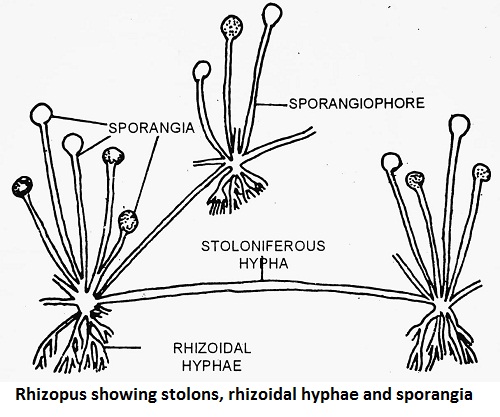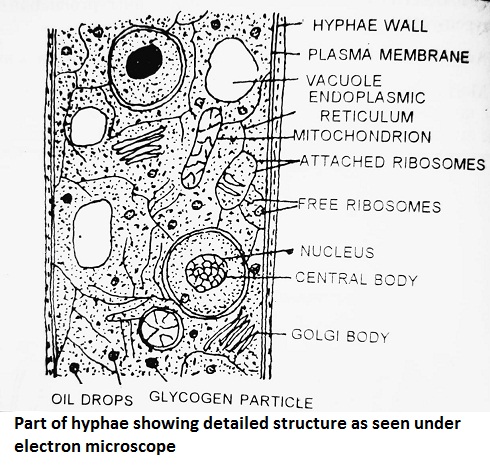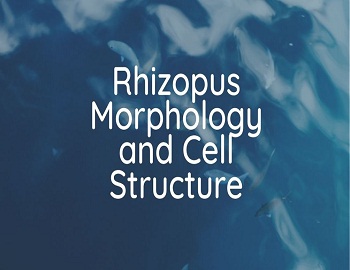Rhizopus Morphology and Cell Structure:
Rhizopus is also called a common bread mould or black mould.
Morphology- The plant body of Rhizopus is a thallus and is called Mycelium. The mycelium consists of a network of a thread-like structure called hyphae. The mycelium of Rhizopus consists of three types of hyphae-
(1) Stolons or Stoloniferous Hyphae grow horizontally on the surface of the substrate. On this hypha at certain points are present the apparent nodes. It is from these nodes that the other two types of hyphae arise. The stolen performs the function of vegetative reproduction.
(2) Rhizoidal Hyphae are much-branched root-like appendages arising from the apparent nodes of stolen. They penetrate into the substrate. They help in the fixation of the plant and secrete certain enzymes which convert the solid food materials in the substrate into the liquid form which is then absorbed by the fungus through rhizoids.
(3) Sporangiophores are erect, aerial hyphae that develop from the apparent nodes of stolons directly above the rhizoids. They are asexual reproductive hyphae. Their tip becomes swollen and is called sporangia which contain spores.

Cell Structure- Microscopic examination of a small patch of Rhizopus shows that it consists of a mesh of numerous thread-like filamentous structures called hyphae. The hypha of Rhizopus is a branched tubular structure. It is aseptate i.e. there are no partitions in the cell. The hypha is enclosed by a single-layered transparent wall called a cell wall which is made up of fungal cellulose which contains nitrogen in addition to carbon, hydrogen and oxygen. On their side is the cell membrane. The cytoplasm is dense towards the apex and vacuolated towards the base. Scattered in the cytoplasm are numerous nuclei. Each nucleus contains a dark staining central body. The protoplasm contains the endoplasmic reticulum, ribosomes, mitochondria and dictyosomes. The reserve food is in the form of glycogen particles. Such multinucleated hypha having an undifferentiated mass of cytoplasm is called Coenocytic hypha.










Comments (No)